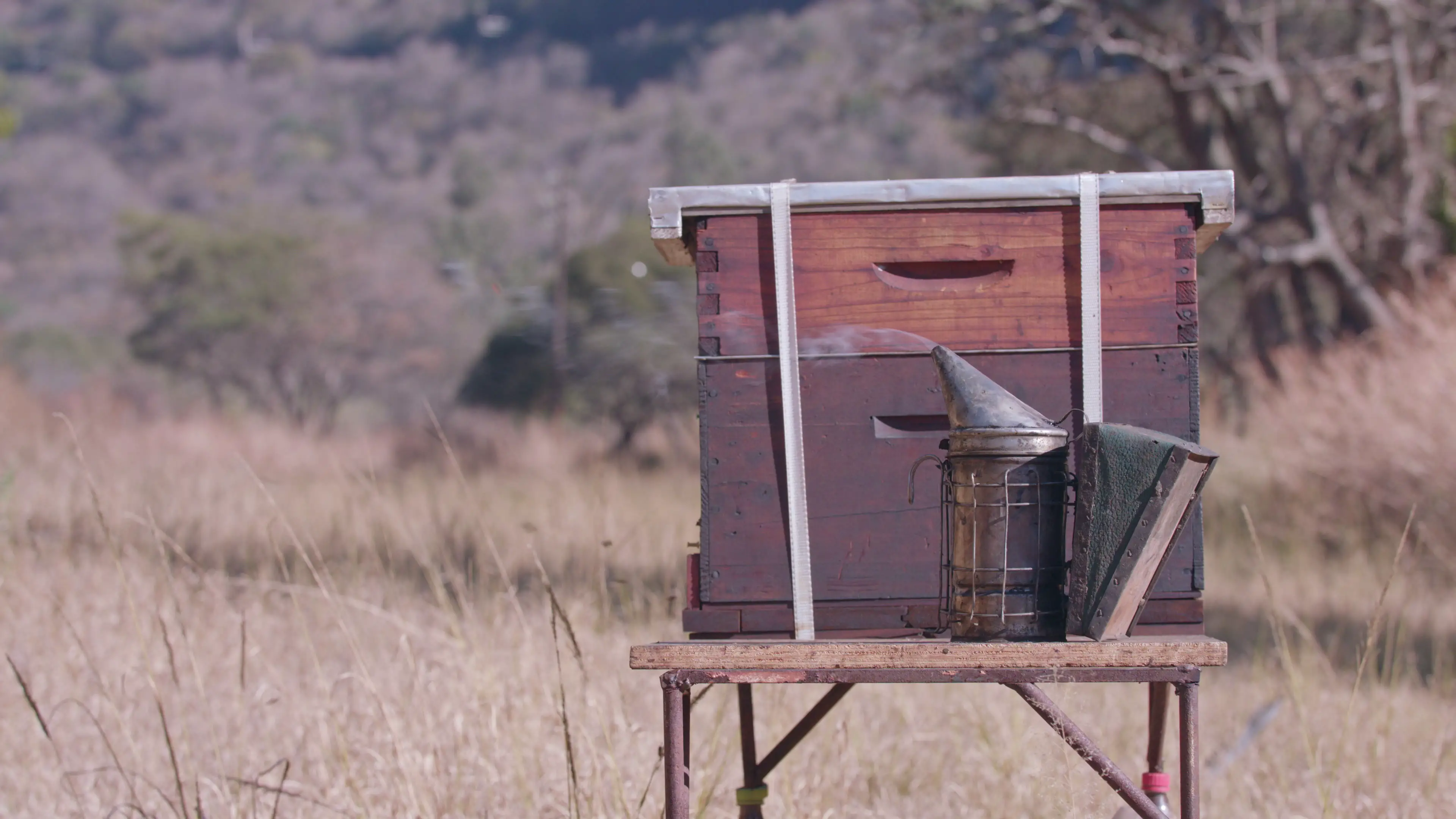Ants are like those overly friendly neighbors who go a little overboard. You let them borrow a cup of sugar one day, and before you know it, they’re having breakfast at your home every morning.
The majority of ant species behave in this manner. They invade when your colony is at its weakest point. They devour the honey and then take bee larvae for a rich proteinous dessert.
While ants don’t wreak any havoc to the hive itself, they affect the colonies living inside. By raiding their honey, they make it hard for the bees to survive through winter. Also, if the colony was already struggling, the bees might give up on their venture and leave.
To prevent this from happening, we’ve explored a few tricks to antproof your beehive stand.
Build moats around the beehive stand legs
This is the ultimate solution for the majority of beekeepers. It works 90% of the time and it’s very easy to execute.
All you need to do is look for 4 tins that can support the hive stand legs. The hive legs should be able to fit on top of these platforms and leave some space between them and the edge of the tin. This setup ensures that no ants can access the hive without first swimming in the moat.
But what should you place in the moat to make it even more effective? One, you can use soapy water. Plain water is not recommended as the ants will merely use the surface tension to climb their way up.
Alternatively, you can use vegetable oil or motor oil. Motor oil is probably less expensive. But in the event that rain pours and the solution spills out, vegetable oil is the eco-friendlier option compared to motor oil.
Paint stripes on the beehive stand legs using grease
Another way of ant-proofing your beehive stands is to paint the supporting beams with an inexpensive motor oil.
While this will keep the ants away for a while, it’s wise to repaint them every few months. Since the hive stands are constantly exposed to harsh elements outdoors, the paint will fade away over time.
Apply spices around your beehive
While there’s no scientific evidence that supports this trick, it’s been found to be incredibly effective. Plus, it causes zero impact on bees.
Even for humans, cinnamon is a mild spice that doesn’t cause any allergies. Furthermore, it’s readily available and easy to apply.
For the best results, we recommend using ground cinnamon. Cinnamon sticks are not very efficient, mainly because ants are smart enough to get their way around them. There’s also the fact that cinnamon powder is easier to spread on a large surface area.
Get rid of any natural bridges to the hive
If there are any weeds or wild grasses sprouting near the beehives, you should get rid of them. Ants can take advantage of these vegetation and use it to access your colonies even when the hives are raised from the surface.
You’ll also need to prevent growth of more grass in the future. You can achieve this by covering the surrounding area with gravel.
Clean up spillage and fallen combs
The main things that attract ants to hives are sugar syrup and insecure combs. To add salt to injury, these spillages are the main culprit for rotting.
Whenever you’re going to feed your bees with syrup, bring a bucket with you. This way, you can reduce the amount that spills. Also, remember to clean these spillages after you finish feeding them.
On the same note, if there are any bridge combs, cut them out and dispose of them in the bucket. A bridge, brace or burr comb is a term used to describe the comb constructed in places that are difficult for the beekeeper to access.
Create a slippery barrier on the hive stand
Like any other crawling creatures, ants will find it very challenging to move on slippery surfaces. Thus, you can use this fact to your advantage and apply oily products- like Vaseline- on the hive stand..
You could also wrap it in cling film, then apply a lubricant on it. And thanks to advancements in pest control, we even have products designed to create slippery surfaces so as to keep ants away.
Conclusion
Ants may not be the most destructive pests for your hive, but they are still a nuisance. Plus, they can make it difficult for bees to continue with their honey-making process. To get ahead of the situation and prevent ants from invading your hive, there are a few precautions you can take.
For starters, set up moats around the beehive stand legs and fill them with either soapy water or vegetable oil. You can also paint stripes on the stand using grease or sprinkle some cinnamon powder around the hive. Also, ensure that there aren’t any bridges that can used to climb to the hive and clean up spillages to avoid attracting ants.


![3 Big Mistakes Beginner Beekeepers Make [And How To Avoid Them!]](https://beekeepingabc.com/wp-content/uploads/2020/11/3-mistakes-beginner-beekeepers-make-90x75.jpg)

![Move over ducks, Queen Bees quack too! [Here’s Why]](https://beekeepingabc.com/wp-content/uploads/2020/06/queen-bee-90x75.png)
![The Flow Hive 2 Review [ Vs. The Classic Flow Hive]](https://beekeepingabc.com/wp-content/uploads/2020/02/Flow-Hive-2-90x75.jpg)
![How Bees Fly [10 Facts About How, When, and Why]](https://beekeepingabc.com/wp-content/uploads/2019/12/A-Bee-Flying-90x75.jpg)